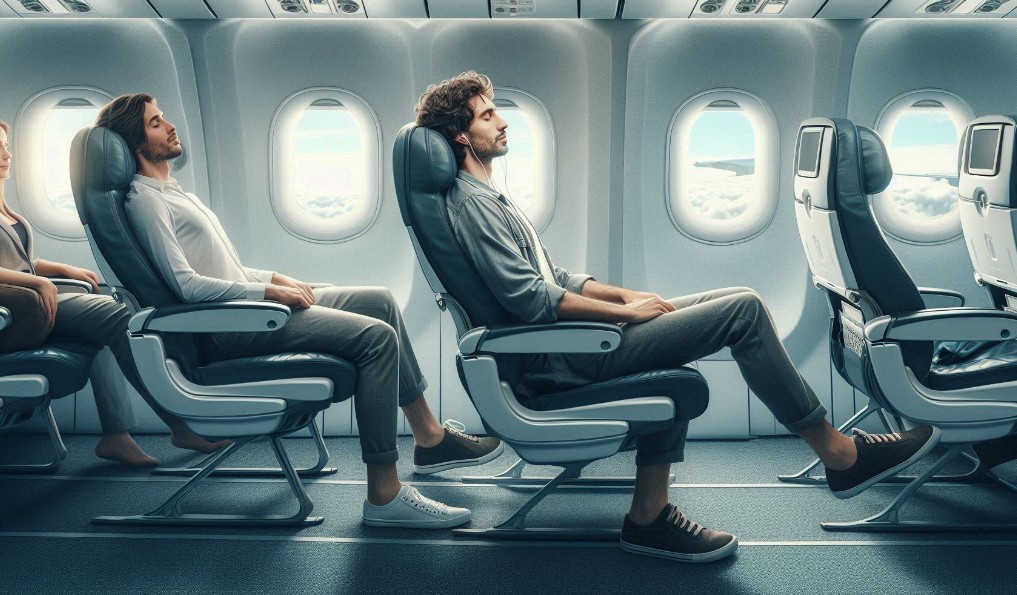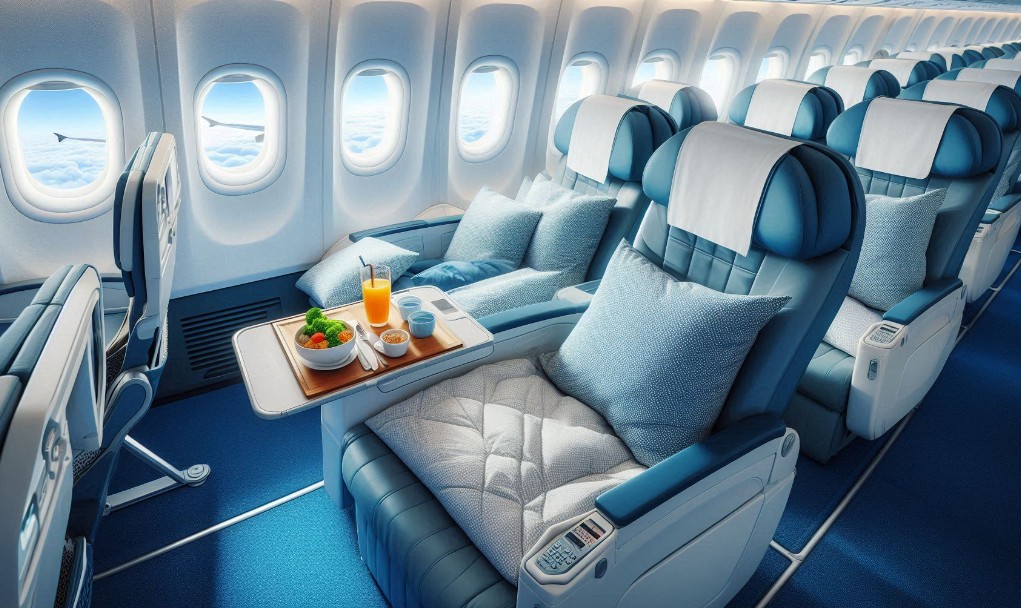Flying can be an exhilarating experience, offering breathtaking views and the promise of new adventures. However, the comfort of your journey largely depends on the seat you choose. The right seat can make a significant difference, transforming a potentially tedious flight into a pleasant and restful experience.
When selecting a seat, many factors come into play, from legroom and proximity to the restrooms to window access and the convenience of disembarkation. Each traveler has unique preferences, whether it's extra space for stretching out, a quiet spot to work, or a window seat to enjoy the scenery. Understanding these preferences and knowing the layout of the aircraft can help you make an informed decision.
In this guide, we'll explore the different types of seats available on most commercial flights and provide tips on how to choose the best one for your needs. Whether you're a frequent flyer looking to optimize your comfort or a first-time traveler seeking advice, these insights will help ensure that your next flight is as enjoyable as possible.
Join us as we delve into the nuances of seat selection, offering expert advice and practical tips to help you find your ideal spot in the sky. From the coveted exit row seats to the peaceful haven of a window seat, we will cover everything you need to know to fly comfortably and arrive at your destination refreshed and ready to go.

Comfort in the Sky: Choosing the Best Seat on the Plane
Choosing the right seat on a plane can make a significant difference in your travel experience. Whether you're looking for extra legroom, quick access to the restroom, or a quiet spot to get some work done, finding the perfect seat requires a bit of strategy and knowledge about the aircraft layout.
Consider Your Priorities
The best seat for you depends largely on your personal preferences and priorities. Do you prefer a window seat to enjoy the view and lean against the wall for a nap? Or do you favor an aisle seat for easy access to the restroom and more legroom? If you're tall, an exit row seat might be ideal, as it often offers additional space. Families traveling with young children might prefer seats closer to the front, reducing the wait time when boarding and deplaning.
For those who value quiet and privacy, choosing a seat away from the galley and restrooms is essential. These areas can be noisy and see a lot of foot traffic, which might disturb your peace. Additionally, selecting a seat in the middle of the cabin can minimize the effects of turbulence, providing a more stable and comfortable ride.
Understand the Aircraft Layout
Each aircraft type has a unique seating configuration. It's crucial to check the seat map for your specific flight, which is often available during the booking process or on the airline's website. Pay attention to reviews and seat ratings on websites like SeatGuru, where passengers share their experiences and tips about different seats. This can help you avoid seats with limited recline, those located near noisy areas, or seats with restricted legroom due to entertainment boxes or other equipment.
Another critical factor is the class of service. Seats in premium economy, business, and first class generally offer more comfort, including wider seats, greater recline, and better legroom. If your budget allows, upgrading to a higher class can significantly enhance your in-flight comfort.
In conclusion, taking the time to research and select the best seat can transform your flying experience from merely bearable to truly comfortable. Remember to prioritize your needs, understand the aircraft layout, and consider the class of service to find your ideal spot in the sky.
Evaluating Seat Locations for Optimal Comfort
When it comes to ensuring comfort during a flight, the location of your seat can make a significant difference. Here's a detailed evaluation of various seat locations to help you choose the best option for your needs:
-
Front of the Plane
- Pros: Generally quieter, less turbulent, and quicker service. Easier access to restrooms and exits.
- Cons: Often reserved for first or business class, potentially more expensive.
-
Over the Wing
- Pros: Center of gravity provides a smoother ride, usually more stable during turbulence.
- Cons: Limited view due to the wing blocking the window. Engine noise can be higher.
-
Exit Rows
- Pros: Extra legroom, which is ideal for taller passengers. Often quieter since they are away from galleys and restrooms.
- Cons: Seats may not recline. Close proximity to exits can be colder. Passengers must be willing and able to assist in an emergency.
-
Aisle Seats
- Pros: Easy access to restrooms and the ability to stretch legs into the aisle. Convenient for passengers who like to move around.
- Cons: Frequent disturbances from other passengers and crew. Less privacy compared to window seats.
-
Window Seats
- Pros: Great for viewing scenery, more privacy, and a wall to lean on for sleeping.
- Cons: Difficult to access restrooms without disturbing neighbors. Less room to move around.
-
Back of the Plane
- Pros: Often less crowded, closer to restrooms, and sometimes better service from the crew.
- Cons: More turbulence, noisier due to proximity to galleys and restrooms, and can be last to disembark.
Consider your personal preferences and flight duration when selecting a seat. Whether you prioritize legroom, minimal disturbances, or a scenic view, there's a seat location that can enhance your travel comfort.

Balancing Legroom and Recline Options
When selecting a seat on an airplane, two critical factors that significantly impact passenger comfort are legroom and recline options. Finding the perfect balance between these two can make your flight much more enjoyable.
Understanding Legroom
Legroom, measured as the seat pitch (the distance between a point on one seat and the same point on the seat in front of it), varies widely between different airlines and aircraft models. More legroom means you can stretch out and move more freely, which is especially important on long-haul flights. Seats with extra legroom are often found in the exit rows, bulkhead rows, and sometimes offered as part of premium economy sections. However, while these seats provide extra space for your legs, they may come with some trade-offs, such as immovable armrests or tray tables stored in the armrest, which can slightly reduce seat width.
Evaluating Recline Options
Recline options refer to how far back you can tilt your seat, providing a more relaxed and comfortable position for resting or sleeping. While standard economy seats offer limited recline, seats in premium economy, business, and first class typically provide greater recline options, sometimes even converting into fully flat beds. It's important to consider the seat behind you when reclining, as excessive recline can impinge on the space of the passenger behind, leading to discomfort and potential conflicts.
For the best flying experience, consider your personal preferences and needs. If legroom is a top priority, seek out seats with extra pitch. If being able to recline is more important, look for sections of the plane that offer more generous recline options. Balancing these two factors can help ensure a comfortable and pleasant journey, tailored to your specific comfort needs.
Understanding the Impact of Seat Features
When choosing the best seat on a plane, understanding the various seat features can significantly enhance your in-flight experience. Different airlines and aircraft models offer a variety of amenities and configurations, each affecting your comfort level in unique ways. Below is a comprehensive look at key seat features to consider:
| Feature | Description | Impact on Comfort |
|---|---|---|
| Legroom | The distance between your seat and the seat in front of you, usually measured in inches. | More legroom reduces cramping and allows for easier movement, especially on long flights. |
| Seat Width | The width of the seat, typically measured in inches. | Wider seats provide more personal space and are especially important for passengers of larger stature. |
| Recline | The degree to which a seat can lean back, giving you the ability to lie back. | Greater recline improves comfort for sleeping and relaxation, but can impact passengers behind you. |
| Seat Cushioning | The padding and ergonomic design of the seat cushion and backrest. | High-quality cushioning reduces discomfort and back pain, enhancing overall in-flight experience. |
| Aisle vs. Window | The position of the seat relative to the aisle or window. | Window seats offer views and a wall to lean on, while aisle seats provide easier access to the restroom and more leg movement. |
| In-Flight Entertainment | Availability and quality of screens, media options, and connectivity features. | Access to entertainment can make the flight seem shorter and more enjoyable. |
| Power Outlets | Availability of electrical outlets or USB ports for charging devices. | Essential for staying connected and keeping devices charged, particularly on long flights. |
| Seat Location | Proximity to exits, restrooms, and galleys. | Seats near exits offer quick disembarkation, while seats far from galleys may experience less foot traffic and noise. |
By carefully considering these features, you can select a seat that best meets your personal needs and preferences, ensuring a more comfortable and enjoyable flight.
